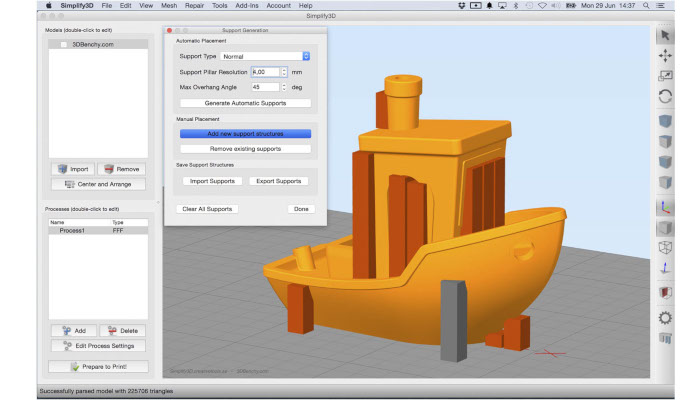


And unlike ABS, there’s also no odor or other fumes. It’s easy to print with, melts at a lower temperature than ABS and doesn’t warp as easily when it cools. PLA is the most common filament you’ll encounter as a beginner, since most printers will come with a starter spool. We suggest sticking to FDM printers because they also offer more options, use a wider range of filaments, do not require a resin tank and are less sensitive to environmental factors such as humidity.įDM filament comes in several varieties, but common ones are polylactic acid (PLA), acrylonitrile butadiene styrene (ABS) and polyethylene terephthalate (PETG). And though SLA can produce incredible detail compared to FDM, resulting in prints with very fine details and smooth surfaces, it’s not as simple to use. Stereolithography apparatus (SLA) is another technology that builds up the layers by flashing liquid resin with laser or UV light to harden it. This process is called fused deposition modeling (FDM), and is probably the most common for home users. The finer the slice of the material, the more detailed your model will be. The thickness of these layers is measured in fractions of millimeters. The printer takes material, like a spool of plastic filament in many cases, threads it into a heated print nozzle where it melts and lays it down on a flat surface - very precisely - over and over and over again. And though the technology has been around for decades, the core of it, as far as home hobbyists are concerned, is simple.

There are three components to 3D printing: the printer, the material and the software. Here’s everything you need to know before you buy. But be warned: There is a steep learning curve. Thankfully, It’s a big hobby, with a devoted fan base that’s quick to offer advice if needed. There is a wide range of options for 3D printers suitable for beginners, but it can be overwhelming to navigate the setup, printing and finishing process. 3D printing is also great for learning new skills and spending quality time with your kids. Not only are entry-level printers fairly cheap now, but while there’s a lot to learn, it’s also just plain fun to take a 3D model you can see on a computer screen and turn it into something you can hold in your hands. Justifying the purchase of a 3D printer isn’t hard. What can you print? What’s fun? What’s useful? Chances are, you’re not sure where to begin. So, you got a 3D printer for the holidays, and you’re excited to dive in. Your CNN account Log in to your CNN account


 0 kommentar(er)
0 kommentar(er)
